
On cosmic scales, gravitation and cosmic expansion battle for dominance.

The evolution of large-scale structure in the Universe, from an early, uniform state to the clustered Universe we know today. These different simulations show the expansion scaled out, but you can see that cosmic structure becomes richer and clumpier as we progress from earlier on toward the present day.
Over time, despite the expansion, galaxies continue to clump together.

This snippet from a medium-resolution structure-formation simulation, with the expansion of the Universe scaled out, represents billions of years of gravitational growth in a dark matter-rich Universe. Note that filaments and rich clusters, which form at the intersection of filaments, arise primarily due to dark matter; normal matter plays only a minor role. The larger-scale your simulation is, however, the more that smaller-scale structure is intrinsically underestimated and “smoothed-out.”
Eventually, gravitational growth and mergers dominate, forming galaxy clusters.

The Coma Cluster of galaxies, as seen with a composite of modern space and ground-based telescopes. The infrared data comes from the Spitzer Space telescope, while ground-based data comes from the Sloan Digital Sky Survey. The Coma Cluster is dominated by two giant elliptical galaxies, with over 1000 other spirals and ellipticals inside. By measuring how quickly these galaxies move around inside the cluster, we can infer the cluster’s total mass. Very massive clusters, many thousands of times the Milky Way’s mass, are common in the modern universe, but very rare early on.
The richest, most massive structures only appear at late cosmic times.

This 2014 composite Hubble image of the colliding galaxy cluster, El Gordo, showcases the most massive galaxy cluster ever discovered from the first half of our cosmic history. Known officially as ACT-CLJ0102-4915, it is the largest, hottest, and X-ray brightest galaxy cluster ever discovered in the distant Universe.
Among the objects from the first half of our cosmic history, one stands out: El Gordo.
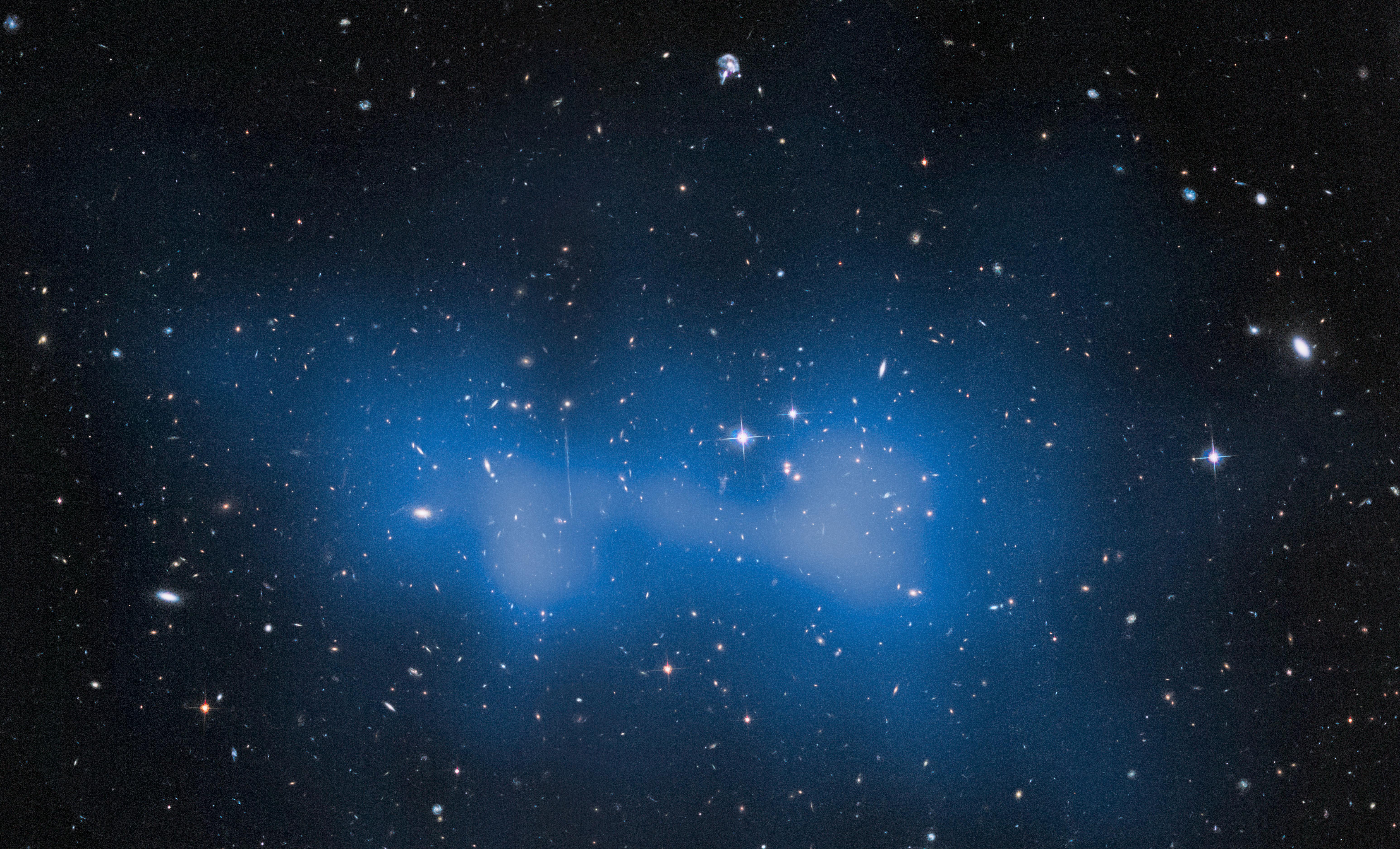
This map shows the El Gordo galaxy cluster, as imaged by Hubble, with a mass map overlaid atop it. The mass was inferred from a combination of weak and strong gravitational lensing effects, while other, complementary studies have shown that this cluster is a merger between two smaller clusters. All told, there are between 2.1 and 3.0 quadrillion (10^15) solar masses worth of matter in the El Gordo cluster.
Through gravitational lensing, this recently discovered cluster was determined to possess 2.1-to-3.0 × 1015 solar masses.

The colliding galaxy cluster “El Gordo,” the largest one known in the observable Universe, shows the same evidence of dark matter and normal matter separating when galaxy clusters collide, as seen in other colliding clusters. If normal matter alone is to explain gravity, its effects must be non-local: where gravity is found where the mass/matter isn’t.
Recently, the James Webb Space Telescope (JWST) turned its cosmic eyes on this object.
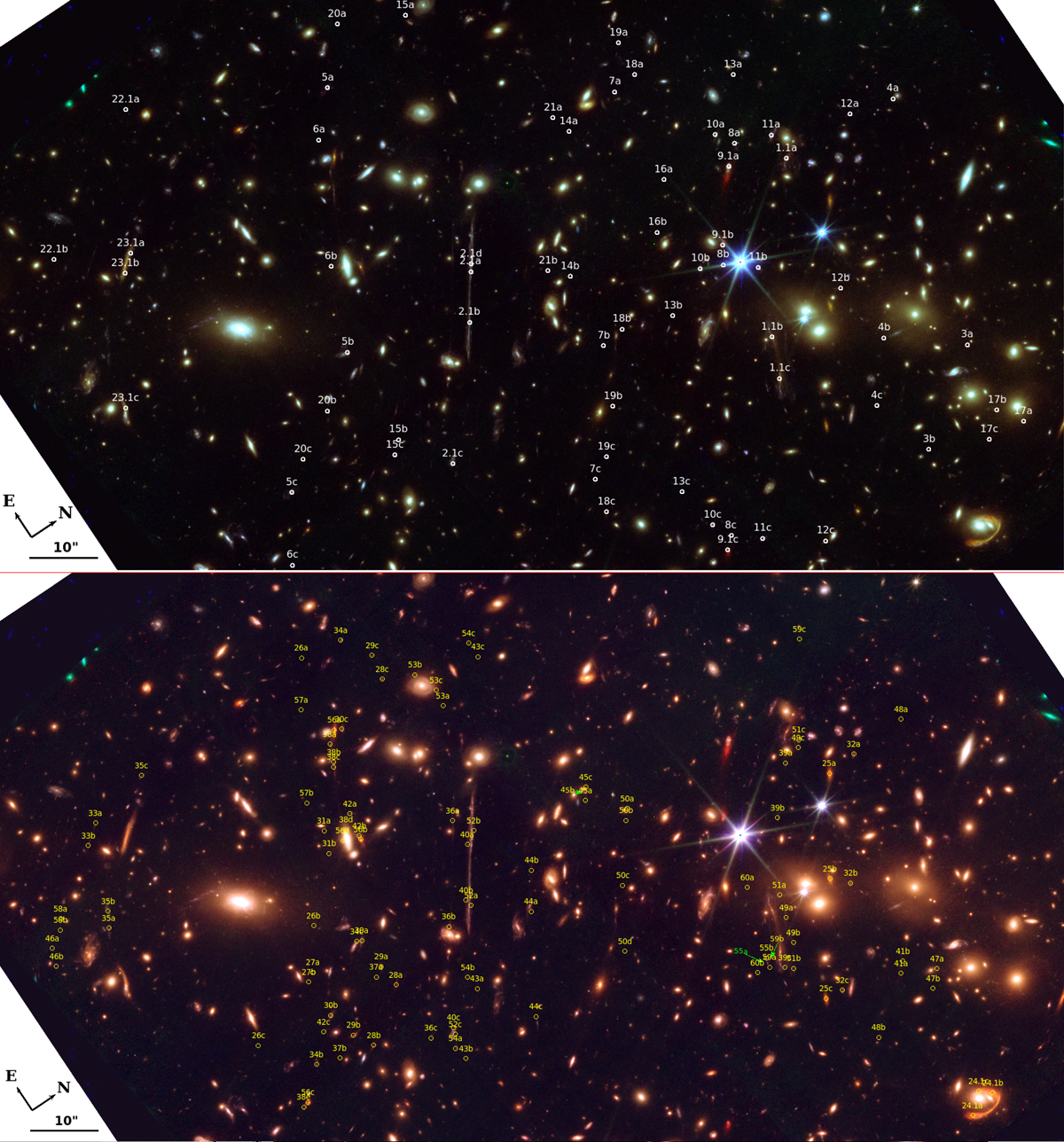
This Hubble/JWST composite view of the El Gordo galaxy cluster highlights brighter objects (top) and shows which objects have been spectroscopically confirmed, while the lower image (bottom) highlights fainter objects and shows which objects only appear to JWST’s eyes and were invisible to Hubble.
Inside, unprecedented details were revealed.

This image, with compass arrows, scale bar, and a color key, showcases JWST’s view of the El Gordo galaxy cluster. A variety of NIRCam filter images were included, and many objects and features were revealed that were previously invisible to all other observatories, including Hubble.
Through JWST’s views, many new deep, lensed galaxies were uncovered.
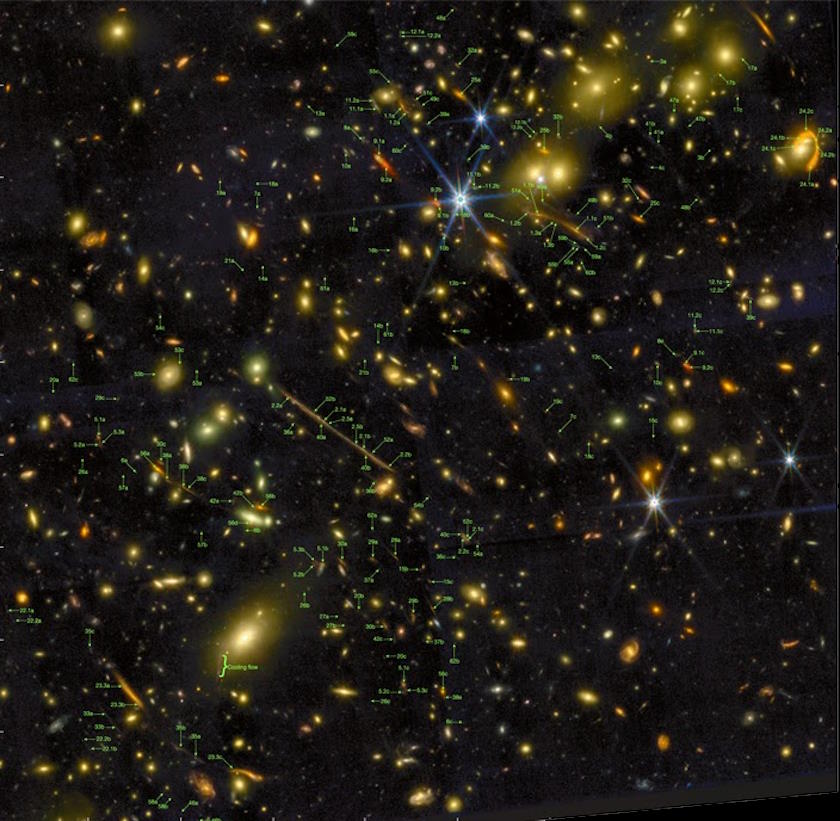
This annotated map of the El Gordo galaxy cluster, as seen with JWST, showcases many gravitationally lensed background features, as indicated by the annotated marks. Many of these features have never been seen before, and are only revealed owing to the combination of JWST’s unique redshift/color sensitivity and El Gordo’s magnification effects.
Arcs, streaks, and multiple images were all spectacularly revealed.

Any configuration of background points of light, whether they be stars, galaxies, or galaxy clusters, will be distorted due to the effects of foreground mass via weak gravitational lensing. Even with random shape noise, the signature is unmistakable. The El Gordo galaxy cluster shows this effect in a remarkably strong fashion, and both Hubble and JWST images help us reconstruct the mass map of the foreground galaxy cluster.
Additionally, superior measurements of background galaxy shapes leads to a better mass/lensing map.

Here, the El Gordo galaxy cluster is shown in two unusual ways: where the colors represent the mass density of the diffuse mass component as inferred by gravitational lensing data (colors), while the black contours show the X-ray emissions as measured via the Chandra X-ray telescope. Note that the two maps are very different from one another, indicating that overall mass does not follow the same locations that the normal matter does.
Included in JWST’s riches are several features never seen before.

Many unusual features can be seen in this JWST image of the El Gordo galaxy cluster, as this massive cluster’s gravity distorts the shape, brightness, and many other properties of the background galaxies behind it.
This includes the longest, straightest lensed galaxy ever viewed: La Flaca.
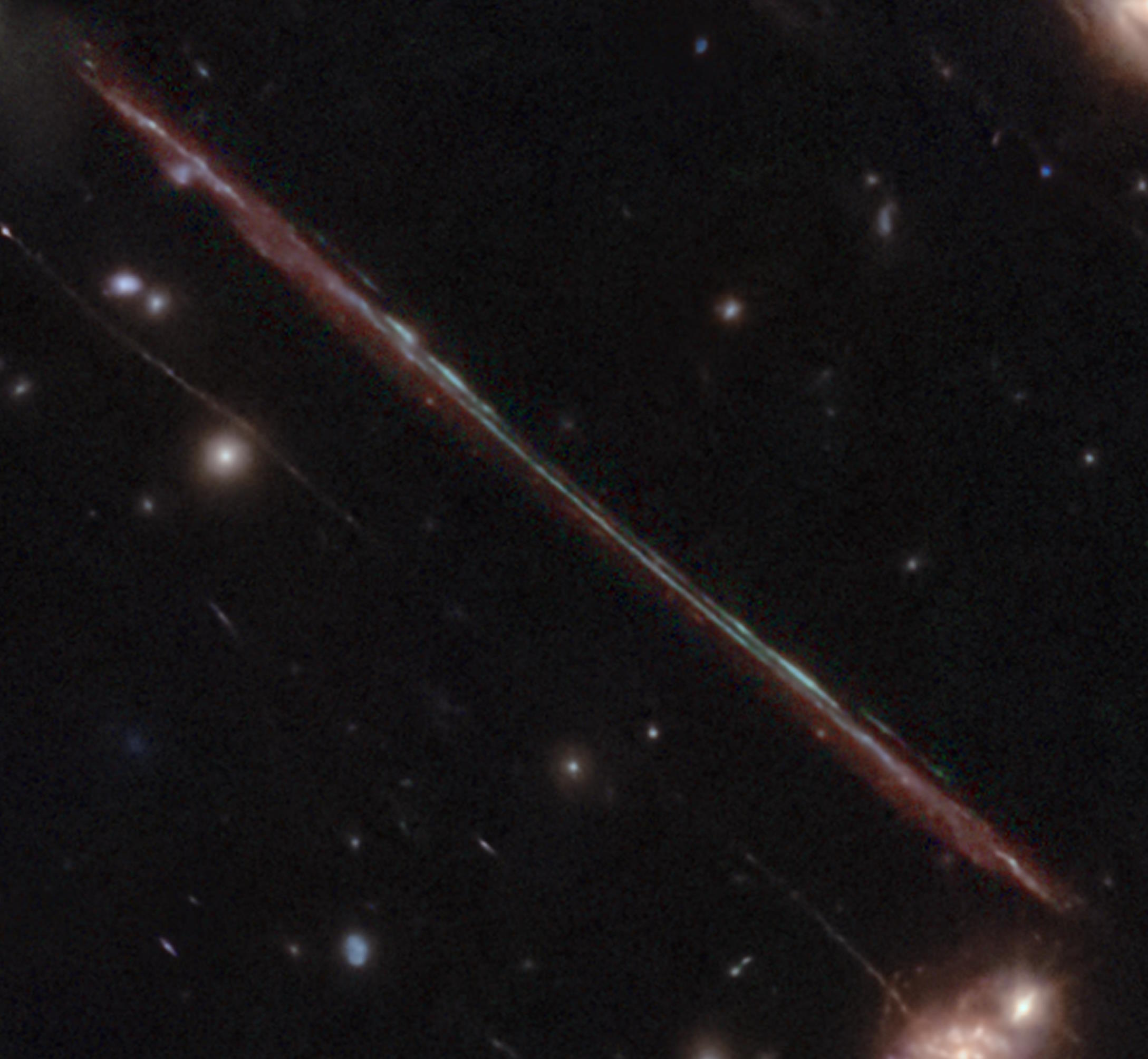
La Flaca, the “skinny” counterpart to the “fat” cluster that lenses it, El Gordo, is the longest, straightest arc ever seen due to gravitational lensing. JWST data has revealed several new point-like features within the line of La Flaca that also experience and contribute to the cumulative gravitational lensing effect.
There’s a triply-lensed, distant galaxy known as the Fishhook.

The triply lensed galaxy shown here is known as the Fishhook, after its unique appearance shaped by the foreground gravitational lens. While the entire foreground cluster, El Gordo, lenses the background galaxy, it’s the prominent double galaxy in the foreground cluster that provides the Fishhook with its remarkable appearance.
And the most distant single red giant star, Quyllur, appears in JWST’s data.
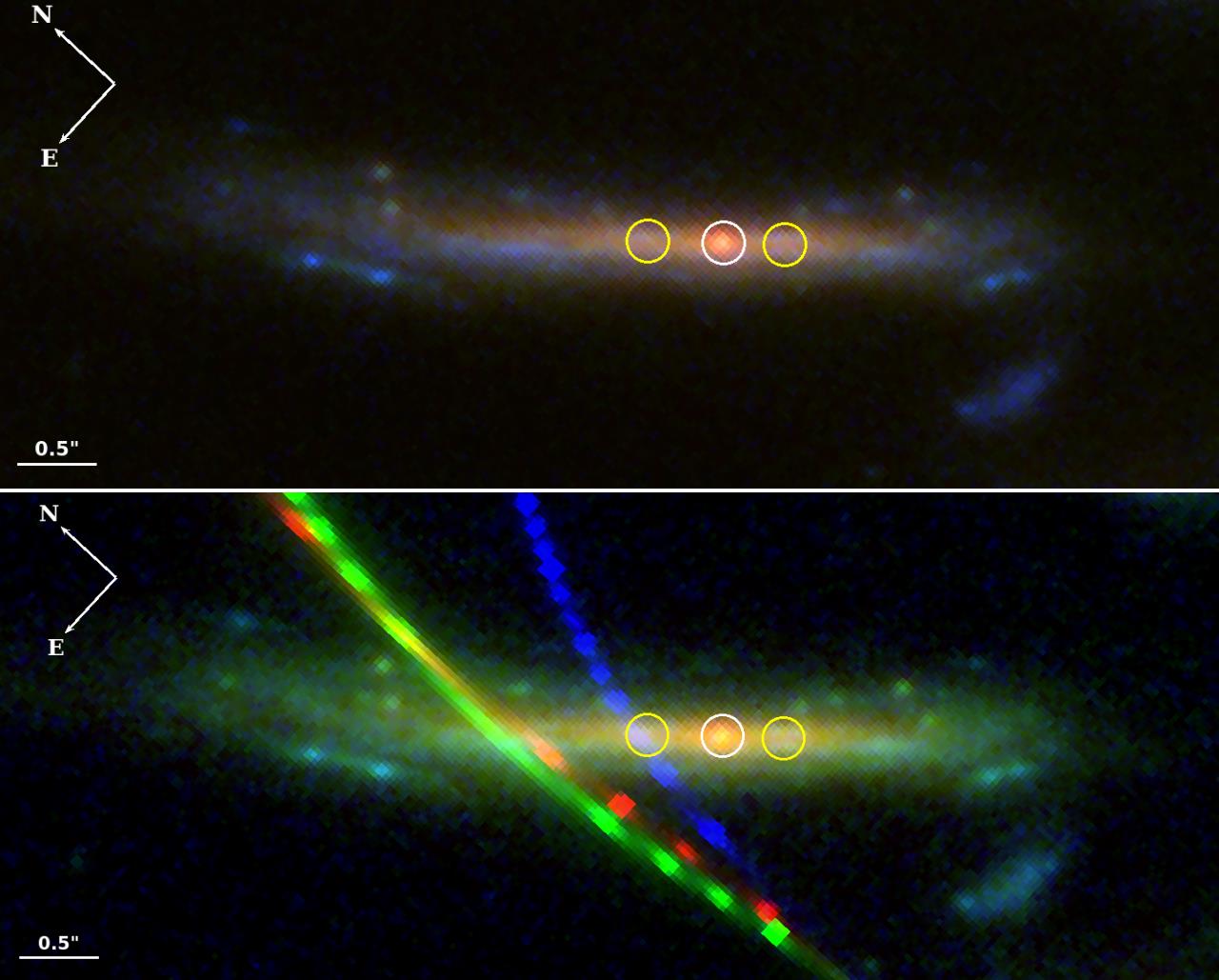
One of the most exciting features found in the El Gordo field, as seen with JWST’s eyes, is the most distant red giant star ever discovered: Quyllur, which is the Quechua term for star. It is the first red giant star found more than 1 billion light-years away, and is actually over 10 billion light-years away. It was only visible due to JWST’s unique capabilities coupled with El Gordo’s gravitational lensing magnification.
Several galaxies have appearances reminiscent of mitosis: biology’s cell division process.
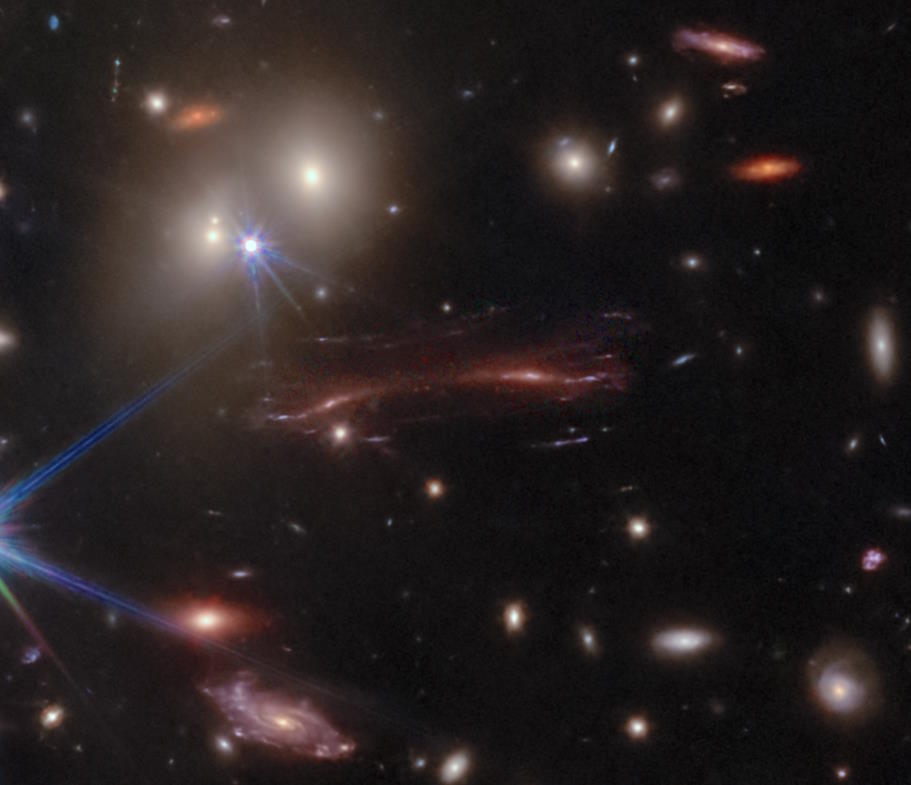
The lensed galaxies shown at the center of this image appear as though they’re being stretched and pulled apart, similar to the chromosome pairs that align and separate during cellular mitosis. However, this is only an optical illusion caused by the gravitational lensing effects of the massive foreground galaxy cluster: El Gordo. These are simply background galaxies whose light is distorted by the gravitational lens.
It’s just one galaxy, on either side of a gravitationally lensing caustic.
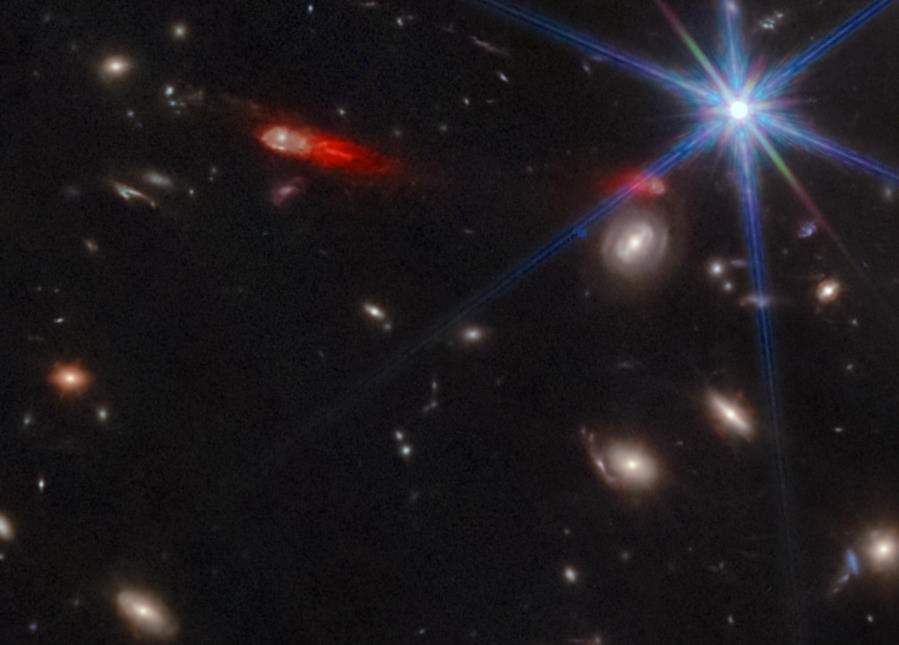
This prominent but unnamed galaxy pair, which I call “red rockets,” actually shows the same lensed galaxy in two different parts of the sky, whose white-and-red features are stretched out and appear in double because of the presence of the foreground galaxy cluster’s gravity: El Gordo.
These lensing enhancements magnify JWST’s power to unprecedented levels.

This image, using the combined data from JWST and Hubble, shows the newest gravitational lens models for the galaxy cluster El Gordo: ACT-CL J0102−4915. The three curves represent the surfaces of maximum lensing magnification for three different methods of mass reconstruction.
Mostly Mute Monday tells an astronomical story in images, visuals, and no more than 200 words.

